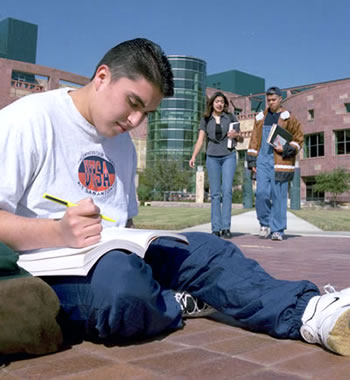
High school graduation rates for Latino teens in Montgomery County, a suburb of Washington D.C, are lower than for any other racial or ethnic group in the county.
Last year, 78.13 percent of Latinos in Montgomery received diplomas, compared with 94.5 percent for non-Hispanic whites, 83.94 percent for African Americans and 95.45 percent of Asians and Pacific Islanders.
At the same time, teen births for Latinas ages 15 to 17 were nearly three times higher than for African Americans and nearly four times higher than for non-Hispanic whites, according to Maryland health statistics.
These statistics frighten Montgomery County officials. Anna Maria Izquierdo, co-chairman of the county’s Latino Health Steering Committee, said, “We are seriously at risk of losing half of a generation of Latinos.”
Teens like Adolfo Avalos of Gaithersburg remember his high school years filled with physical fights, school problems, gang involvement, and anger at himself and the world. He eventually dropped out.
Avalos said, “I felt so frustrated. I didn’t have no friends, I didn’t understand the language, I didn’t understand anything the teacher told me, and I didn’t understand the system in school.”
The results of a 2006 survey of more than 1,000 Latino teens have been brought to the attention of school and county officials in recent weeks.
The survey was conducted in person at malls, soccer fields, fast-food restaurants and other teen spots in Germantown, Gaithersburg, Wheaton and Silver Spring.
The survey states that 94 percent of Latino teens spend no time with an adult mentor, and 50 percent have friends who were or are involved in a gang. More than 40 percent reported being involved in physical fights the previous year, and 30 percent said they did not feel confident that they would graduate from high school.
Identity Inc., a youth development organization, conducted the survey with the support of a Montgomery County grant. Diego Uriburu, deputy executive director of the group, said, “If we have any chance of averting this crisis, we all need to work together.”
Uriburu said that the county’s schools and support systems are working well for about half of Latino youths in Montgomery. According to Uriburu, the challenge is to continue to promote that well-being while improving the life for those who might be at risk.
He noted that many Latino children struggle with trauma from extended family separations due to immigration.
In recent meetings, county government and school officials have been sympathetic to the survey results. County Executive Isiah Leggett (D) has asked the task force and his office’s Latin American Advisory Group to join forces and come up with a list of recommended actions. The task force also went to the Board of Education seeking school system involvement.
With the recent county’s budget crunch, things might take longer to address. However Ana Lopez, executive director of Community Bridges, an after-school program for low-income girls from diverse backgrounds, says “at the same time, just making it a priority can help.”
According to the teen survey, nearly 50 percent of Latino teens did not participate in school sports, and more than 70 percent did not belong to school clubs. Outside school, more than 60 percent were not involved in any activities.
Henry Montes, a task force member, said that the county as a whole has a lot at stake. He says that it is in Montgomery’s “enlightened self-interest,” to help those at risk become productive members of society.

Recent Comments